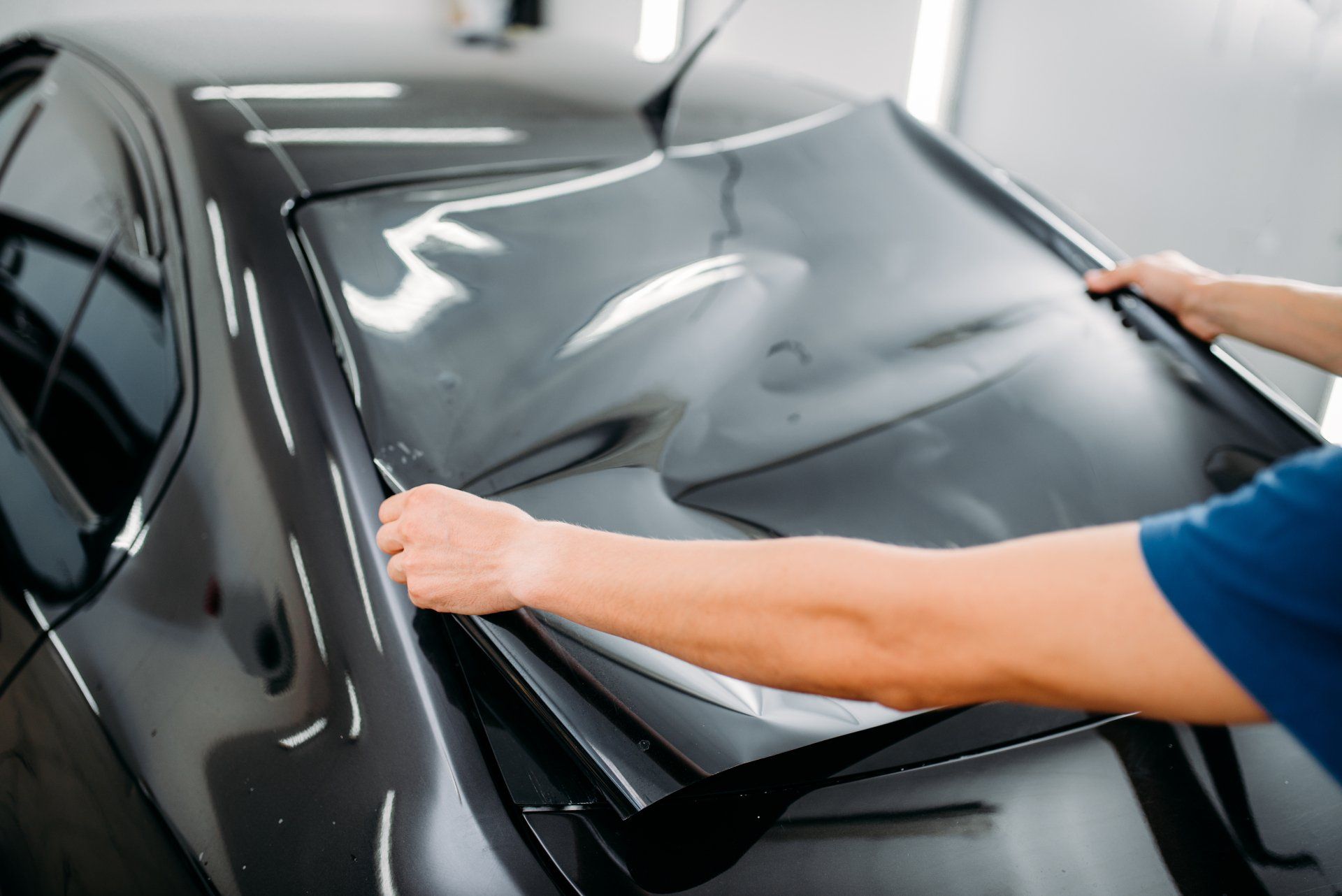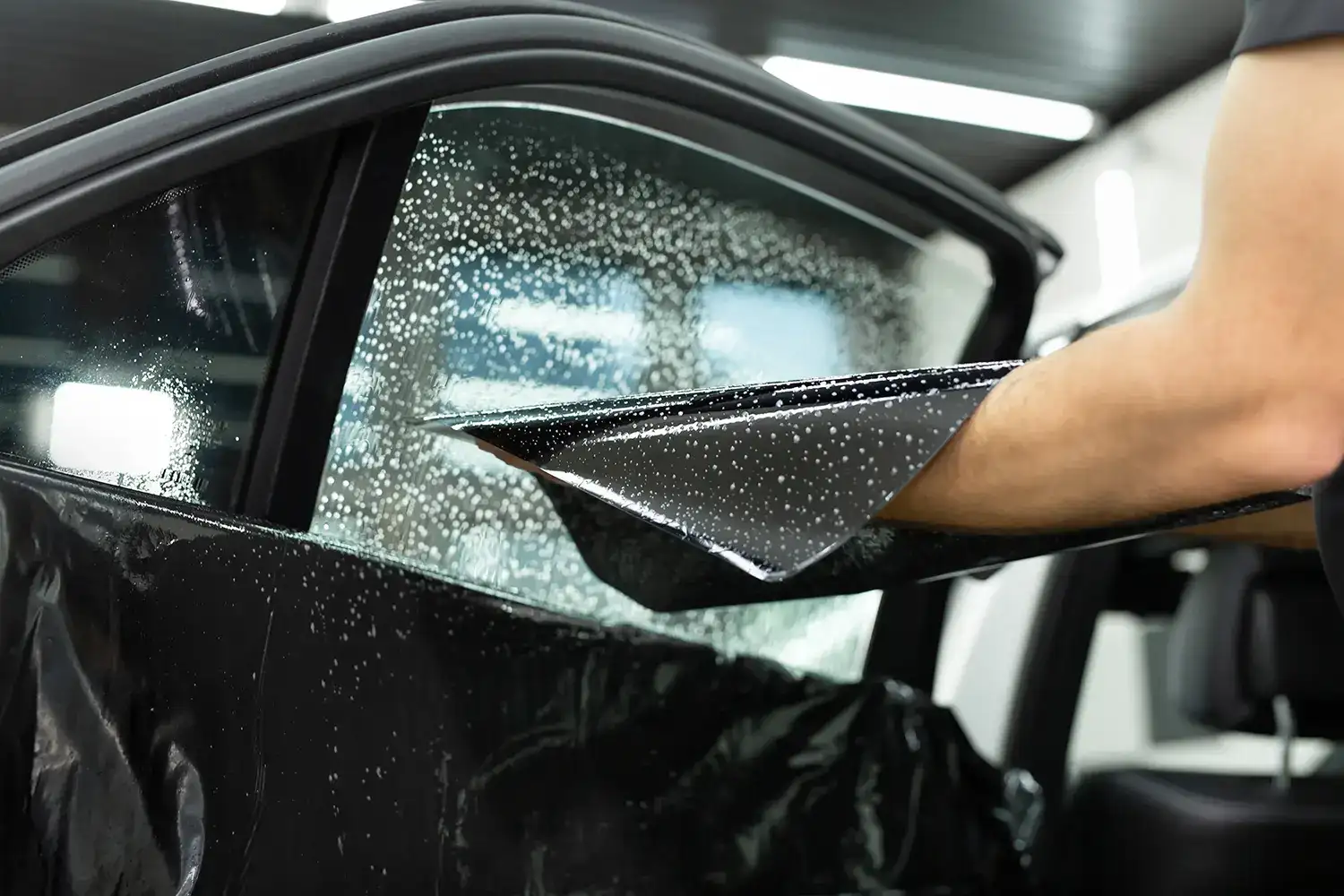Window Tinting Rules: What You Need to Know Prior To Tinting Your Car
Window Tinting Rules: What You Need to Know Prior To Tinting Your Car
Blog Article
The Process of Professional Home Window Tinting Explained
From picking the right movie type to the meticulous prep work of windows, each action plays a vital role in accomplishing a flawless application. Complying with these initial preparations, the mindful cutting and application of the film demand accuracy to avoid blemishes.
Choosing the Right Window Movie
Picking the right window film entails recognizing various aspects that influence both aesthetic allure and performance. The first consideration is the kind of movie, which can range from dyed, metalized, to ceramic films. Colored movies largely offer privacy and aesthetic improvement, while metalized films reflect warmth and UV rays, enhancing energy performance. Ceramic movies, although usually more expensive, offer remarkable efficiency without endangering presence.
Following, take into consideration the movie's Visible Light Transmission (VLT) percent, which determines how much light enters the space. A lower VLT provides greater personal privacy and heat denial yet might minimize all-natural light dramatically. In addition, the movie's solar warm gain coefficient (SHGC) is important; a lower SHGC indicates better thermal performance, helping to preserve interior comfort.

Preparing the Windows
Once the ideal home window film has been selected, the following action is extensively preparing the home windows for installment. This prep work is critical for attaining ideal adhesion and making certain a flawless look post-installation.
The very first job includes cleansing the home windows carefully (window tinting). A high-quality glass cleaner is crucial, preferably one that is ammonia-free to prevent damaging any kind of window seals or tint products. Utilizing a lint-free cloth or paper towels, service technicians must remove any kind of dirt, dirt, or oil, paying unique interest to the edges and edges where debris often collects

Reducing the Film
An accurate strategy to cutting the film is necessary for making sure an ideal fit on the prepared windows. This step requires both skill and interest to information, as errors can cause undesirable spaces or overlaps that concession the visual and useful qualities of the tint.
Prior to reducing, the expert need to gauge the home window dimensions properly, accounting for any one-of-a-kind shapes or contours. additional reading It is a good idea to utilize premium home window movie, as this material often tends to be extra flexible throughout the reducing process. The film is usually laid level on a clean, smooth surface area, and a sharp utility blade is used to my sources guarantee clean edges.
To attain optimal results, several specialists make use of templates developed from previous setups or utilize software application to make exact patterns. A common technique involves adding an added margin to the template, permitting changes throughout the application phase.
Moreover, cutting the movie in a regulated setting decreases the threat of contaminants affecting the adhesive side. By sticking to these meticulous methods, window tinting experts can make certain that the film not just fits effortlessly however likewise executes successfully gradually, enhancing both appearance and capability.
Using the Tint
After thoroughly cutting the movie to the proper measurements, the next step entails using the tint to the window surface. This process starts with making certain that the window is clean and free from any type of dirt, debris, or deposits that can affect attachment. A specialized cleaning solution is commonly made use of, followed by comprehensive drying with a lint-free cloth.
When the surface area is prepared, the installer will very carefully position the tint film versus the glass. It is essential to straighten the film next page precisely to stay clear of misplacement, as any kind of mistakes can cause an amateur appearance. To promote this, the installer may utilize a light mist of application service on the glue side of the film, permitting small repositioning if necessary.
Using a squeegee, the installer will then begin to press the movie onto the glass, working from the center in an outward direction to eliminate air bubbles and guarantee a firm bond. This technique is crucial, as it ensures a smooth and flawless finish. Throughout the application, attention to detail is crucial to avoid folds or imperfections, ensuring that the color not just enhances looks yet also supplies the wanted capability.
Last Examination and Care
The last examination is an essential step in the home window tinting process, ensuring that the installment fulfills both aesthetic and functional requirements. During this phase, professionals meticulously take a look at the set up tint for any type of imperfections, such as bubbles, folds, or imbalances. A comprehensive evaluation also consists of examining the adherence of the movie to the glass, in addition to its harmony and overall look.
After the assessment, appropriate treatment and maintenance instructions are offered to the client. It is vital to notify them concerning the suggested timeline for cleaning up the tinted windows, usually advising a delay of at the very least 1 month after installment to allow the adhesive to cure fully. Clients should be enlightened on appropriate cleansing items and methods, highlighting the evasion of ammonia-based cleansers that can damage the color.
Additionally, specialists should advise consumers on the importance of regular upkeep to lengthen the life of the tint. This includes periodic look for indications of wear or damage and reacting without delay to any type of problems. By making sure a detailed final inspection and giving clear treatment guidelines, window tinting professionals enhance consumer satisfaction and the longevity of their job.
Verdict
The specialist window tinting process incorporates numerous important steps that guarantee top quality outcomes. Selecting the ideal movie type, preparing the windows thoroughly, precisely cutting the movie, and applying it with accuracy are vital for achieving a remarkable surface. An extensive final examination warranties that all requirements are met, while correct post-installation care is essential for preserving the color's durability and performance. Complying with these procedures eventually enhances both the visual appeal and capability of the colored windows.
Report this page